- Home
- Danielle Steel
The Mistress Page 12
The Mistress Read online
Page 12
“I’ll miss you,” she said softly, as she kissed him.
“I’ll miss you too. I’ll call you when we land.” And then he was gone. He rarely said he loved her, but she knew he did, just as she loved him, or believed she did. It was love as she knew it.
She started looking for things for the apartment that morning, at antique stores she had walked by often, and now she had a mission, and a job to do. She had never had as much fun in her life, and one of the antique dealers gave her the name of a woman who made fabulous curtains. For the next two weeks, she never stopped. She bought paintings, furniture, fabrics, two beautiful rugs for the living room, and one for their bedroom. She bought an antique canopied bed that had been enlarged. She bought everything they needed for the kitchen, and hired a Russian maid. And when they went back to London, she wanted to do more shopping there. Vladimir called her for reports daily, and before meeting her in London, he went back to Italy, to check progress on the plans for the boat.
It was a busy fall for both of them, and in December, Natasha oversaw the installation of everything she had bought, while Vladimir was in Moscow with the president again. By the time he met her in Paris the week before Christmas, the apartment looked as though they had lived there for years. And when he came to see it, Vladimir loved everything she had chosen, and was impressed by what a good job she had done. They decided to spend Christmas there, and flew to the Caribbean the day after, where Princess Marina was waiting for them. She had made the crossing in November, and he was planning to keep her there until April or May, and then bring her back to the South of France in late May or early June. It felt good to be on the boat and relax in familiar surroundings. They were returning to Paris in late January for the haute couture shows, where he loved picking clothes for her twice a year, in January and July. They had a month to relax and spend on the boat until then, while Vladimir worked from his high-tech office on the yacht.
He flew back to Paris with her two days before the couture shows, and it was wonderful having the apartment to stay in. It was beginning to feel like home.
There were only two haute couture houses left of the illustrious old ones, Dior and Chanel, and a third more recent one, Elie Saab, that created custom-made evening gowns, and a small group of new, young designers, whose work had never been considered haute couture by those knowledgeable in fashion. But the two big shows were fun to go to, and the clothes and the settings were spectacular.
The first show they were going to was Dior Haute Couture, which was held in a tent they had built specially, behind the Invalides on the Left Bank. It was a spectacular affair, heated and theatrically lit, all lined in mirrors, with a garden theme that looked like a movie set and had been inspired by the gardens of Versailles. Millions were spent on the décor for each couture show, as well as the ready-to-wear shows, which were almost as theatrical and also occurred twice a year. The ready-to-wear shows were big business and happened in four cities, and were put on to show retailers worldwide what was coming in the next season so they could place their orders, and attracted a host of celebrities and fashionistas as well. The haute couture shows were a different breed, and only in Paris. They were the last survivors of a dying art, and their clients had dwindled over the years to a precious few.
With clothes that cost anywhere from fifty to five hundred thousand dollars—entirely handmade, every single stitch, each one made to order, and never duplicated in the same city, social circle, or event—there were almost no haute couture buyers in the modern world. In years gone by, there were flocks of wealthy society women, many of them on best-dressed lists, who came from around the world to order their wardrobes twice a year. But as the big design houses closed one by one, and the price of couture clothes rose into the stratosphere, there were only a few young women now, the mistresses of very, very rich men, who bought them. The styles no longer suited older women who could afford them, and the young girls they were primarily designed for could never have bought them on their own.
The shows were done more now for their publicity value as a spectacle, and the few girls who were lucky enough to be able to order the clothes were being dressed by the much older men who supported them and wanted to show them off as trophies and symbols of their vast fortunes, power, virility, and business prowess. None of it was what haute couture had been meant for, to dress extremely sophisticated, fashionable, well-dressed women. For the most part, haute couture had become a parody of itself, and only a handful of very wealthy Arab princesses, and the young mistresses, long term or otherwise, of Russian businessmen, were able to order the clothes. And in many cases, what one saw on the runway was never made or sold, it was simply an example of a kind of exquisite craftsmanship that had once been the summit of French fashion, and was now being worn by sexy young girls who had no appreciation for the rarity and quality of what they wearing.
The January show was for summer clothes, and winter clothes were shown in July, in order to place advance orders, to allow time for the handmade and often intricate garments to be created. So when Vladimir and Natasha arrived in Paris to go to the couture shows, she was going to pick her wardrobe for the following summer. And Vladimir always liked to be with her for the show, and he would make careful note of what he wanted her to wear, as the girls came down the runway. They were always the most expensive outfits and gowns. Like his cars and boats, how Natasha looked and what she wore were the outward signs of his immense wealth, just like the jewelry he gave her. Natasha wore jeans and simple clothes around the house, but Vladimir always preferred to see her dressed extravagantly, or at least expensively, when she went out, and even at home, where only he saw her. “Blue jeans are for peasants,” he would say, although he wore them. But he wanted all heads to turn when Natasha walked in anywhere, and any one of her outfits cost the price of a luxury car, or a small apartment.
She didn’t like disagreeing with him on any subject, or to seem ungrateful, but she always tried to point him toward the simpler clothes when they went to the haute couture shows, particularly for summer, when they spent so much time on the boat, but he brushed aside what she said. Sometimes he liked to see her in an evening gown at dinner, even when they were alone at home. He would no sooner have bought inexpensive clothes for her, or plain ones, than he would have acquired insignificant art. He wanted what he paid for, to show the world without question how far he had come. And although Natasha loved going to the shows and seeing the fashions on the runway, she always dreaded what he would select for her. He allowed her a few of her own choices, but for the most part, he chose what he wanted her to wear, and she didn’t argue with him about it. She never liked making him angry. She had done so only a few times, and the look in his eyes and the harsh tone of his voice when he reprimanded her were enough to keep her in line. Whenever someone crossed him, countered his opinion, or disobeyed, it didn’t go well. If one did as he commanded and expected, he was a kind, gentle man. But there was a volcano just below the surface. Natasha had seen it directed at others, and did everything she could to avoid having it directed at her. And she certainly wasn’t going to risk his anger over what she wore. She was grateful for his generosity, and how could she complain about what he gave her? He spent millions on her clothes every year, and everything he bought looked beautiful on her.
For the stage setting of Dior’s haute couture show for the coming summer, there were banks of flowers everywhere, the heavy scent of tube roses and lily of the valley in the air. The clothes were diaphanous and sexy, the skirts were short, almost everything was see-through, bare breasts were frequent in the show. The heels were so high they were almost unwearable. Many of the clothes were backless for summer. They were all clothes she could wear well, although she longed for a few simpler things, and picked out two plain cotton dresses that were flawlessly cut, and less exciting than what Vladimir chose for her that showed off her body but could only be worn in showier circumstances than daily life. There were lots of paillettes and tiny sequins,
each one hand-sewn on nude-colored net. There were leggings and bodysuits, entirely sewn with tiny beads in flower-shaped patterns, that cost two hundred thousand dollars, due to all the embroidery and beadwork, and Vladimir ordered three of them for her, and a fourth one in shimmering pink. He told her that you don’t dress a spectacularly beautiful woman in rags, which plainer clothes were to him, even if haute couture. In winter, he dressed her in furs, preferably sable, or mink, chinchilla, and ermine dyed exotic colors with fabulous hats to match, alligator leggings, hip boots in leathers and skins, with heavy embroidery on remarkable coats. He bought her clothes to be noticed in, not simply to wear for fashion and comfort, and she wondered secretly sometimes what it would be like to wear ordinary clothes, other than on the boat. She hadn’t done so since she left Moscow with him as a young girl, and then immediately felt guilty and ungrateful for her thoughts. She knew how fortunate she was to have a man who bought her haute couture.
He ordered seven outfits for her from the Dior show, and six more at Chanel, and three summer evening gowns from Elie Saab, all with plunging necklines and slits up the side, to her hips. She wore all the clothes well, and the women who ran each couture house loved dressing her, and made a great fuss over both of them. Vladimir made his choices quickly after he saw Natasha in the dresses he had made note of, and he rarely changed his mind. He knew how he wanted her to look. And Natasha thanked him profusely when they left each house. They went back to the apartment afterward, curled up in front of the fire in their bedroom, and made love. He was delighted with the clothes he’d bought her, and couldn’t wait to see her in them the following summer. There would be three fittings for each dress before they were delivered, to make sure that they fit her perfectly. There could not be a wrinkle or a misplaced hand stitch in a couture gown. It had to be flawless, like the woman who wore it.
The Chanel show was even more spectacular than the one at Dior. It was held in the Grand Palais every season, an impressive glass building. Chanel had once placed an iceberg in the center of it for a winter ready-to-wear show. It had been flown in from Sweden and returned the next day. This time Chanel had created a tropical beach for their summer couture show, with tons of sand brought in, and a boardwalk for the fifty models to saunter down, wearing the clothes. Natasha loved the feeling of the show and the clothes, which were a little less showy and naked than those at Dior, which Vladimir preferred.
There was no question that whichever house dressed her, she was going to be breathtaking in everything Vladimir ordered for her. He consulted her about the outfits he liked, but in the end, he made the final selections, and treated her opinions like those of a child. It was always a little bit humiliating for her when he made it clear that she had no decision-making power, but the managers of haute couture were used to it. Vladimir was no different from the other men they dealt with, all men of power, and in Vladimir’s case more than most. Men like him did not simply sit back and let others make their decisions on any subject, even about fashion, or how they dressed their women. And Natasha served a purpose with what she wore. It was her job to make others envy him for the woman on his arm, which she did. Just as the shows were a publicity statement of sorts for the houses that put them on as a spectacle, she did the same for him. She was a beacon for all the world to see. She belonged to Vladimir Stanislas, no different than his boat, which was the most noticeable, spectacular, and enviable on the water. And the new one he was planning would be even more so.
He talked to her about the plans and showed her some of them, when they had dinner at the apartment that night. It was snowing, and they had canceled dinner reservations at Alain Ducasse at the Plaza and decided to stay home. It was bitter cold outside. He did some work, and Natasha read a new book about Impressionist art that she had bought and was fascinated by.
She had bought a number of decorating books too, to get ideas for the apartment, and it was looking magnificent. The curtains had been installed while they were away on the boat, and Vladimir loved them. In spite of his more important pursuits in business, he had an eye for beauty, and always noticed what she did in the apartment, and commented when he liked it. He was very pleased with what she’d accomplished, and she was happy spending more time in Paris, since the apartment was warmer and more inviting than his very showy London house, which had been done by a famous decorator before he met Natasha. It had been photographed by every important decorating magazine when he’d had it done, but Natasha never loved it. The Paris apartment felt more like home, and so did the boat. She hoped the new one would be as nice—his plans for it sounded very grand. But her preferences were always simpler and less grandiose than his. He had tried to “educate” her into being bolder in her taste.
Vladimir spent the weekend with her in Paris after the haute couture shows, before he returned to Moscow. His new mineral holdings, and running them, had proven to be more time-consuming than he expected, and he told her it was too cold for her in Moscow, and he would be too busy, and had to do some traveling within Russia to unpleasant areas. He wanted her to stay in Paris, and then they would go to Courchevel in mid-February in three weeks. It had become the favorite ski resort of all Russians, and he had rented a fully staffed house for them for a week. He was an avid skier when he had time, and had hired ski teachers for her every winter for the past seven years, and she was a decent skier, though not of his caliber. But they had a good time skiing together, and she was looking forward to it.
The apartment seemed empty when he left. It snowed in Paris that week, and she spent most of the time in bed reading, or sitting by the fire in the cozy den, and combing antique shops for treasures when she went out. She always found something new that she loved for the apartment—that week a pair of Louis XV bronze chenets for the fireplace, to hold the logs. They had leaves and cherubs on them, and she put them in their bedroom.
She went to several galleries as well, looking for art for the apartment, and always received a stack of invitations for openings. One had caught her eye for that Thursday night, on the Left Bank. It was a gallery where she had bought a small but pretty painting two months before. And if it wasn’t snowing, she promised herself she’d go to the opening on Thursday night. She sometimes preferred going before the opening, if they let her, to snap up whatever she wanted before others had a chance to do so, but she had no time that day. She had workmen coming to add new shelves in the kitchen, and she wanted to oversee the work herself.
It was an hour after the opening had started when she got into the Bentley Vladimir hired for her in Paris, with a driver. She never drove herself in Paris, and was afraid to, with the complicated traffic and one-way streets, although she sometimes drove in the South of France. Vladimir kept a Bentley sports car for her on the boat. But in Paris, she preferred to use a driver. Vladimir had one of his own when he was in town, and used a Rolls. Her Bentley was subtler and less showy as they drove across the Pont Alexandre III to the Left Bank, and into the sixth arrondissement, where the gallery was.
It was small but well laid out, and filled with people drinking wine and talking when she got there. There were the usual arty types, and some serious people from the art world. It was an eclectic-looking group of young and old, as she walked around, looking at the work. It was handsome, serious work, with an odd combination of brushwork that resembled the Old Masters and the lighter colors and subjects of the Impressionists. The artist having the show definitely had his own style, and she hadn’t paid attention to the name on the card. All she had noticed was that she liked the work. She picked up a sheet of the artist’s biography at the desk as she walked past it, and continued to look around, and as she reached the back of the gallery, she stopped dead and found herself staring at her own face in a haunting painting that had captured her flawlessly. It was a portrait of her, and she was shocked.
And as Natasha stood there staring at herself, instinctively Theo looked up and saw her from across the gallery, and nearly felt his heart stop. He had never exp
ected her to be there and see it.
“What’s up? Something wrong? You look like you’ve just been shot.” Inez was with him. He had decided to try one more time, and invited her to dinner just before Christmas. They had been dating for a month, and she was still leery of him, but it was going well. So far he had proven to her that he wasn’t crazy, despite being an artist, and he even liked her little girl, Camille. Theo wasn’t in love with Inez, not yet at least, but he was enjoying her company. She was an intelligent woman, responsible and sensible, and well able to take care of herself and her child. She wasn’t looking to be “saved” or supported. She wasn’t interested in marriage, and she’d rather be on her own than with the wrong man. So far he liked everything about her, and she had come to Paris with him for the opening, while a friend baby-sat for her child. They were staying at a small hotel on the Left Bank, near the gallery, and their relationship was still very new. She had seen him go deathly pale when he spotted Natasha at the back of the gallery, staring at her portrait. She stood like a statue gazing at it.
“No, nothing, I’m fine,” he said, smiling at Inez, and slipped quietly away from the group they were in, and threaded his way to where Natasha was standing. She was wearing a heavy fur coat, jeans, and high heels, since Vladimir wasn’t in town, and she looked as heartbreakingly beautiful as ever, as she turned to him with her soft halo of blond curls, and her hair loose down her back like a young girl.
“You painted that?” she asked him, with enormous eyes, as though accusing him of stripping her naked in a public place and leaving her there, exposed. He couldn’t deny it, and the painting was so haunting, so intense, and so obviously personal, that it somehow suggested he knew her intimately and even loved her.
“I…yes…I did…after I saw you last summer. You have a face that begs to be painted,” he said, which sounded like a poor excuse, even to him. The painting was so deep that it was obvious to both of them that it was more than that to him.

 All That Glitters
All That Glitters Nine Lives
Nine Lives Silent Night
Silent Night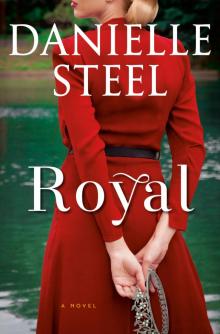 Royal
Royal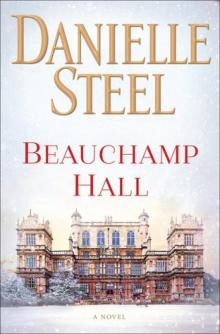 Beauchamp Hall
Beauchamp Hall Daddy's Girls
Daddy's Girls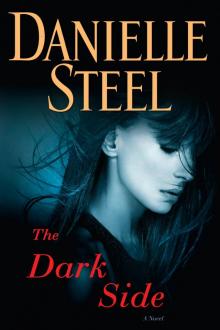 The Dark Side
The Dark Side Blessing in Disguise
Blessing in Disguise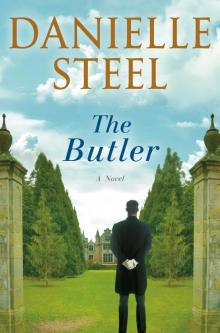 The Butler
The Butler Neighbors
Neighbors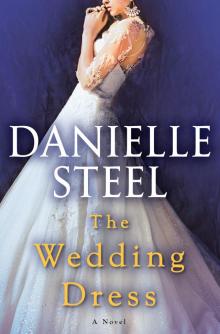 The Wedding Dress
The Wedding Dress The Affair
The Affair Lost and Found
Lost and Found Child's Play
Child's Play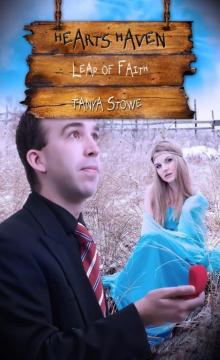 Leap of Faith
Leap of Faith His Bright Light
His Bright Light Mixed Blessings
Mixed Blessings The Numbers Game
The Numbers Game A Gift of Hope: Helping the Homeless
A Gift of Hope: Helping the Homeless Amazing Grace
Amazing Grace Pure Joy
Pure Joy Against All Odds
Against All Odds Sunset in St. Tropez
Sunset in St. Tropez The Ghost
The Ghost Passion's Promise
Passion's Promise Thurston House
Thurston House Matters of the Heart
Matters of the Heart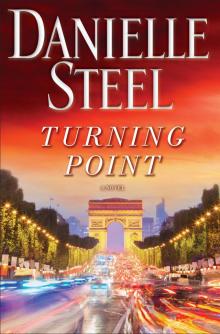 Turning Point
Turning Point Message from Nam
Message from Nam Kaleidoscope
Kaleidoscope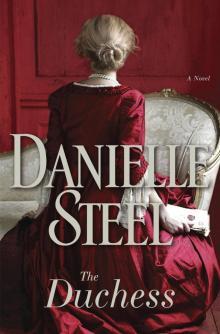 The Duchess
The Duchess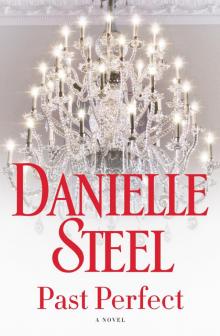 Past Perfect
Past Perfect The Wedding
The Wedding The Cottage
The Cottage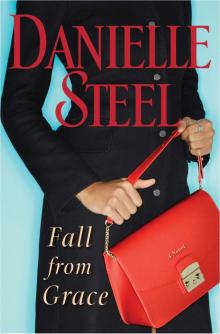 Fall from Grace
Fall from Grace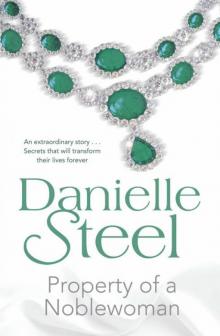 Property of a Noblewoman
Property of a Noblewoman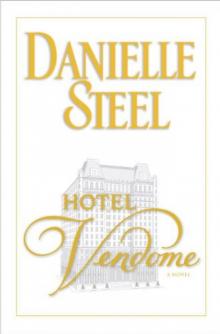 Hotel Vendome (2011)
Hotel Vendome (2011) Toxic Bachelors
Toxic Bachelors Crossings
Crossings Bittersweet
Bittersweet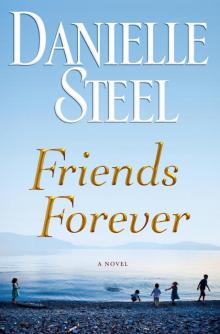 Friends Forever
Friends Forever Family Ties
Family Ties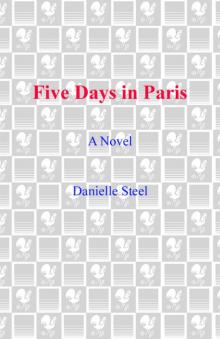 Five Days in Paris
Five Days in Paris The Kiss
The Kiss Daddy
Daddy Vanished
Vanished Safe Harbour
Safe Harbour Rushing Waters
Rushing Waters Miracle
Miracle Palomino
Palomino Now and Forever
Now and Forever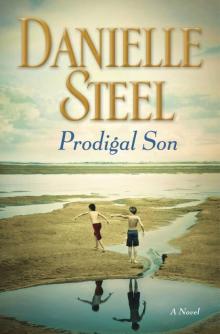 Prodigal Son: A Novel
Prodigal Son: A Novel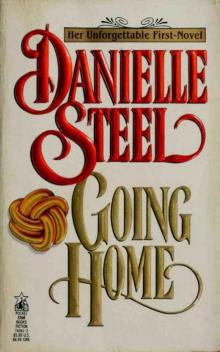 Going Home
Going Home Heartbeat
Heartbeat Ransom
Ransom Fine Things
Fine Things First Sight
First Sight Big Girl: A Novel
Big Girl: A Novel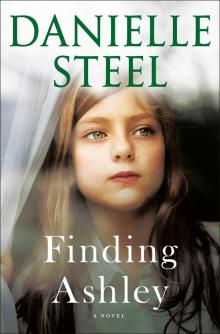 Finding Ashley
Finding Ashley Lone Eagle
Lone Eagle Coming Out
Coming Out Winners
Winners A Good Woman
A Good Woman Dangerous Games
Dangerous Games One Day at a Time
One Day at a Time Dating Game
Dating Game Blue
Blue Granny Dan
Granny Dan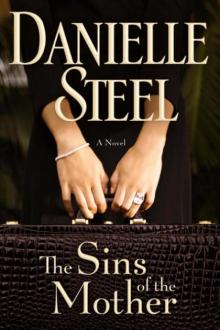 The Sins of the Mother
The Sins of the Mother Happy Birthday: A Novel
Happy Birthday: A Novel The Gift
The Gift Summer’s End
Summer’s End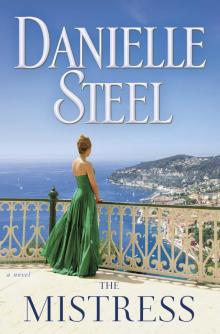 The Mistress
The Mistress A Perfect Life: A Novel
A Perfect Life: A Novel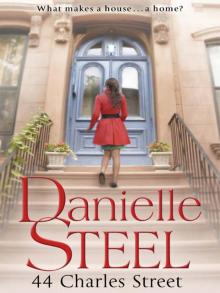 44 Charles Street
44 Charles Street Zoya
Zoya Family Album
Family Album Rogue
Rogue Accidental Heroes
Accidental Heroes Malice
Malice Echoes
Echoes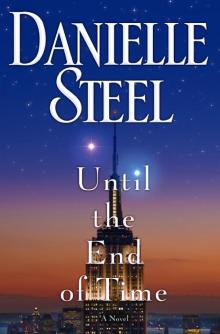 Until the End of Time: A Novel
Until the End of Time: A Novel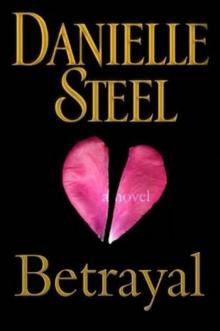 Betrayal
Betrayal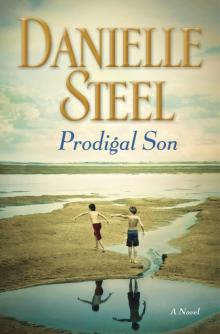 Prodigal Son
Prodigal Son Country
Country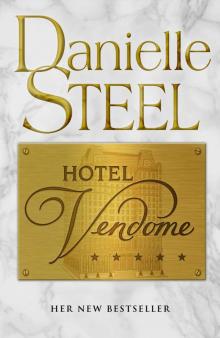 Hotel Vendome
Hotel Vendome Impossible
Impossible Remembrance
Remembrance H.R.H.
H.R.H.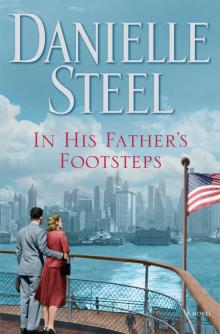 In His Father's Footsteps
In His Father's Footsteps The Right Time
The Right Time Bungalow 2
Bungalow 2 The Cast
The Cast Wings
Wings Southern Lights
Southern Lights Lightning
Lightning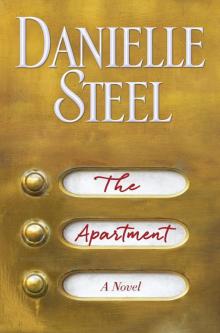 The Apartment
The Apartment Big Girl
Big Girl The House on Hope Street
The House on Hope Street Second Chance
Second Chance Legacy: A Novel
Legacy: A Novel Sisters
Sisters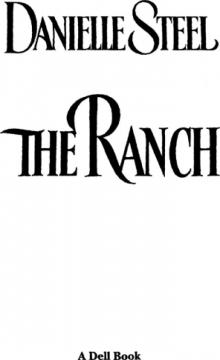 The Ranch
The Ranch Silent Honor
Silent Honor The Good Fight
The Good Fight Betrayal (2012)
Betrayal (2012)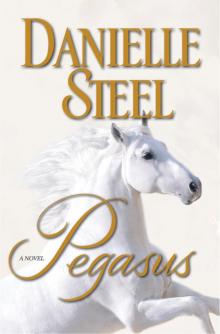 Pegasus: A Novel
Pegasus: A Novel